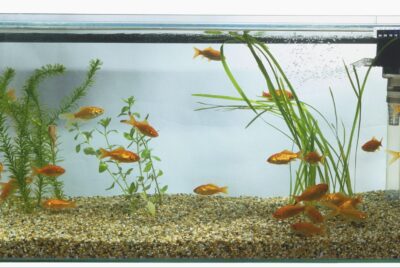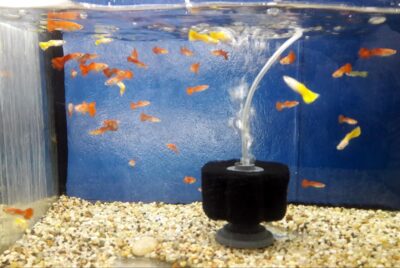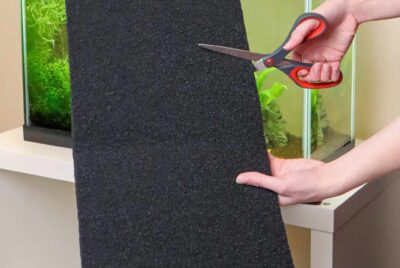How to Soften Aquarium Water
Ensuring the health and vitality of your fish requires maintaining the right set of conditions in your aquarium. One vital aspect that needs keen attention is the hardness of your aquarium water. So, the question arises – how to soften aquarium water? The answer to this question isn’t as straightforward as it may seem, but with the right guidance, you can navigate the process.
Decoding Water Hardness in Aquariums
When discussing water hardness, we are essentially referring to the levels of dissolved minerals in the water. Soft water is low in these minerals, while hard water exhibits high mineral content. The minerals involved, primarily calcium and magnesium, can impact various elements in your aquarium, including the health of your aquatic pets, the efficiency of your equipment, and the vibrancy of your aquatic plants.
Distinguishing Between General Hardness (GH) and Carbonate Hardness (KH)
To effectively manage the hardness of your aquarium water, it’s important to understand the two distinct types of water hardness – General Hardness (GH) and Carbonate Hardness (KH).
General Hardness (GH) pertains to the concentration of calcium and magnesium ions dissolved in the water. GH plays a crucial role in fish osmoregulation, the process where fish regulate the movement of water and salts in and out of their cells. Notably, GH does not influence pH levels.
Carbonate Hardness (KH), also known as alkalinity, measures the quantity of carbonate and bicarbonate ions. Unlike GH, KH directly affects the pH level of your water. The higher the KH, the higher the pH, and vice versa.
While both GH and KH are essential to consider, they are not interchangeable and can have different impacts on your aquarium.
The Importance of Water Stability – (How to Soften Aquarium Water)
Achieving the right water parameters is a common concern for aquarium enthusiasts, particularly when it comes to softening aquarium water. However, it’s crucial to understand that maintaining water stability is of utmost importance in ensuring the well-being of your aquatic environment. Let’s explore why stability matters and how it relates to softening aquarium water.
Adaptation of Fish to Tank Conditions
Most aquarium fish available today have been bred in captivity for generations, leading to their adaptation to a wide range of water conditions. This adaptability means that stability, rather than achieving ‘perfect’ water chemistry, is more critical for their overall health. By providing stable and consistent conditions, you create an environment where fish can thrive, even if the water hardness is not at the exact ideal level.
Minimizing Stress and Health Issues
Sudden, drastic changes in water chemistry, such as rapidly altering water hardness to soften aquarium water, can cause stress and health problems for fish. Abrupt shifts in water parameters can disrupt the delicate balance of their internal systems, leading to distress, weakened immune systems, and increased susceptibility to diseases. To avoid these issues, it’s essential to make changes to water hardness gradually over time, allowing fish to adjust and adapt without unnecessary stress.
Preserving Biological Balance
Aquariums rely on beneficial bacteria to maintain water quality. These bacteria play a vital role in biological filtration, breaking down harmful substances and ensuring a healthy environment for fish. Sudden changes in water hardness can disrupt the growth and stability of these beneficial bacteria colonies, jeopardizing the biological balance of your tank. By maintaining water stability, you provide a favorable environment for the growth of beneficial bacteria, supporting efficient filtration and maintaining excellent water quality.
The Softening Process: Gradual Adjustments
When it comes to softening aquarium water, it’s essential to approach the process gradually. Sudden and drastic methods can lead to rapid changes in water chemistry, causing stress and potential harm to your fish. Instead, use techniques such as dilution with softened or RO (reverse osmosis) water, utilizing specific water conditioners, or incorporating natural methods like the use of driftwood or peat moss. Monitor water parameters closely and make small adjustments over time to achieve the desired level of softness while ensuring stability.
Remember, stability in water parameters is crucial for the well-being and adaptation of your aquarium inhabitants, including when you aim to soften aquarium water. Focus on maintaining stable conditions while implementing gradual adjustments to water hardness. By prioritizing water stability and providing a favorable environment, you can create an ideal habitat that promotes the health, vitality, and longevity of your aquatic pets.
The Exceptions to the Rule – (How to Soften Aquarium Water)
Ornamental Shrimp and Water Hardness
Ornamental shrimp, such as cherry, bee, or bamboo shrimp, have specific preferences when it comes to water hardness. These delicate creatures require high GH (general hardness) to utilize the calcium content for their shell development. Discover the optimal conditions and techniques to provide the perfect habitat for these fascinating shrimp.
Spawning Requirements and Water Hardness
The successful spawning of fish often relies on specific water conditions. Different species have unique environmental triggers necessary for reproduction. Learn about the diverse spawning requirements and explore methods to adjust water hardness to create an ideal breeding environment for your fish.
Aquarium Plants and Water Hardness
Aquarium plants also have preferences when it comes to water hardness. Some species thrive in low GH (general hardness) conditions. If you aim to cultivate plants that prefer soft water, it’s essential to modify your aquarium’s water hardness accordingly. Discover techniques and considerations for adjusting water hardness while supporting the growth and health of your aquatic flora.
Balancing Mineral Content for All Aquarium Residents
Remember, maintaining an appropriate mineral content in your aquarium’s water is vital for the overall well-being and development of all its inhabitants, including fish and plants. Find out the secrets to striking the perfect balance to ensure the survival and optimal growth of your aquatic ecosystem.
Softening Your Aquarium Water: Practical Methods
Softening aquarium water is a process that demands careful consideration and a scientific approach. Here are five reliable strategies to achieve this goal.
1. Using Peat Moss
Peat moss is a natural water softener that can be added to your aquarium without disrupting the aquatic life. However, bear in mind that the impact of peat moss is gradual and not instant. It slowly reduces the mineral content in the water, helping to soften it over time. To apply peat moss to your aquarium, you can either add it to your aquarium filter or soak it in a clean, large container for a couple of weeks after boiling it to eliminate contaminants.
2. Employing Water Softening Pillows
Water softening pillows are an effective method to eliminate excess minerals from your aquarium water. These pillows can be inserted into the tank and removed after a certain period, during which they will attract and absorb the potentially harmful minerals from the water, making it softer.
3. Utilizing Reverse Osmosis
Reverse Osmosis (RO) is a scientifically proven method to soften aquarium water without disturbing the lives of your fish and plants. RO removes pollutants from the source water and is used widely in industries for water softening. However, keep in mind that you might need to mix RO water with tap water to achieve the desired balance between softness and hardness.
4. Incorporating Driftwood
While not as effective as the methods mentioned above, driftwood is still a viable option for softening your aquarium water. It releases tannins, changing the tank water color to brown, but does not harm the fish.
5. Harvesting Rainwater
If your tap water is rich in minerals, the best way to get soft water for your aquarium is through rainwater harvesting. Rainwater is typically devoid of the problematic minerals found in hard water. Harvesting and storing it for use in your aquarium can be an efficient solution.
Conclusion – (How to Soften Aquarium Water)
Softening aquarium water isn’t an arduous task if you understand the basics and employ the right strategies. Whether you opt for peat moss, water softening pillows, reverse osmosis, driftwood, or rainwater, remember that the goal is to create a balanced and stable environment for your aquatic pets.
Frequently Asked Questions – (How to Soften Aquarium Water)
Q: How to soften water in an aquarium?
A: There are various methods to soften aquarium water, including using peat moss, water softening pillows, reverse osmosis, driftwood, or harvested rainwater.
Q: Will fish species adapt to harder water over time?
A: Certain fish species can adapt to harder water over time if the change happens slowly. However, drastic changes in water hardness can be detrimental to fish health.
Q: Should I reduce water hardness rapidly?
A: No, rapid changes in water hardness can be harmful to your fish. If adjustments are needed, they should be implemented gradually to avoid stressing or harming the fish.
Q: Can I use tap water to soften aquarium water?
A: Tap water can be used to mix with purified water to achieve the desired hardness. However, the tap water should be tested for contaminants before being added to the aquarium.
Q: How often should I check the hardness of my aquarium water?
A: Regular monitoring of your aquarium water’s hardness is crucial. It’s recommended to test the water at least once a week to ensure it remains within the ideal parameters for your fish species.





